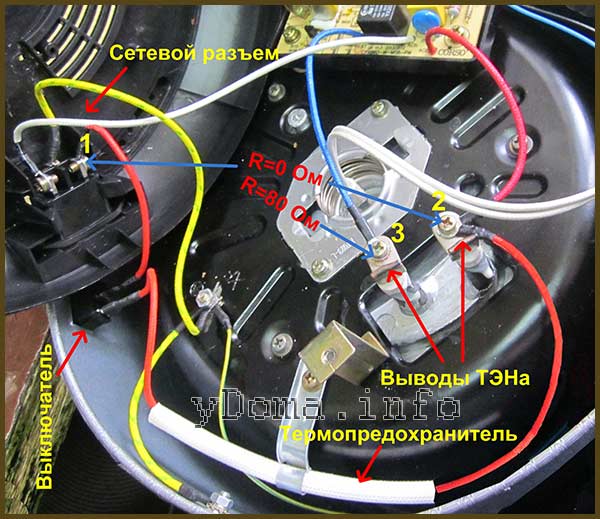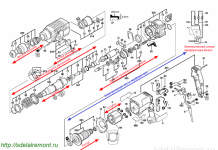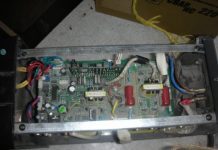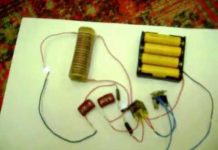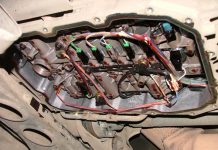To repair a multicooker, you need to understand what it is.
Judging by its appearance, the Redmond multicooker looks like a small container with a display and buttons for selecting cooking programs. Its lower part contains a socket for connecting to the mains and a switch. There is a lid on top, opening which you can see a bowl for food. It is in it that the entire cooking process takes place. Such dishes can be easily removed, which is very convenient for washing.
The principle of operation of all multicooker is almost the same, and if you understand the brand of one device, you can easily repair other models of devices, such as Philips, Panasonic, Polaris, Scarlet, Mulinex, Vitek, Maxwell and others.
To protect the pressure cooker from damage, you must carefully read the instructions and adhere to the rules for operating the appliance written there.
Do not forget that before placing food, the food bowl must be pulled out so that accidentally spilled liquid or scattered small crumbs do not get inside the mechanism.
These are the most common reasons why the multicooker may not turn on.
If the multicooker breaks down and does not work, then in some cases the corresponding error codes are displayed on its display, by which you can understand what exactly happened.
Also, codes E1, E2, E3 may indicate that moisture has entered the mechanism. In this case, it is necessary to unplug the device from the network and allow it to dry out.
Also, one of the common breakdowns of multicooker is the contamination of the device. This happens when liquid or any loose substances, such as rice or sugar, gets inside the mechanism.
If the thermal relay is clogged, the contacts should be slightly unclenched, and then wiped with thick paper. This can happen if water gets into the device or condensation forms.
A thermal fuse is a kind of wire-wound element that resembles a resistor in its appearance. Its main function is to protect the multicooker from overheating.
The temperature when the fuse blows is 170 degrees, and the maximum amount of current passing is 10 or 15 A, depending on the type of element. If these indicators exceed their norm, the fuse burns out.
Not a single electric circuit of a multicooker is complete without thermal fuses. They are usually located inside the device. Usually there are several of them, and you have to figure out which one burned out. To do this, you need to check the elements with a multimeter, which should measure the resistance. And if it is not there, the part needs to be replaced.
Thermal fuses can be of several types. The popular types are cpgxld or ldcpg. The operating voltage of such elements is usually rated at 250V, the throughput of the operating current is 10A or 15A. A number with a degree sign usually indicates at what temperature this element will work. For example, at 167 ° C.
As a rule, these parts are not restored, that is, they are triggered once, after which a new part must be installed.
If the multicooker stops responding to any actions, does not heat, beeps, heats up poorly, does not turn off, blinks or gives errors on the display, it must be inspected and, if necessary, repaired. This can happen with any brand of technology, no matter whether it is Samsung, Redmond or Vitek.
The main thing is to remember that you need to work with electrical devices very carefully, observing all safety measures and be sure to remove the device plug from the outlet! Just turning off the multicooker is not enough!
VIDEO
So, if the multicooker turned off on its own, burned out due to power surges, does not respond to any button presses, you can try to figure out the reasons for this phenomenon and fix the unit yourself. If nothing can be done, it is better not to risk the device and take it to a service center, where specialists will tell you what exactly happened and will repair the equipment.
Each electronic device inherently fails over time. This is due to many provoking factors, including manufacturing defects of internal parts, improper operation, mains voltage, and so on. The lack of heating of the multicooker is also the result of a certain malfunction within the mechanism.A master from the Vostok-Polyus service center, providing his services in Moscow and the Moscow region, will help you to solve the problem in the shortest possible time.
There are several reasons contributing to this phenomenon:
damage to the thermal fuse. The breakdown of this element requires qualified intervention, since the repair is accompanied by many complex actions. Restoring a thermal fuse requires increased care and accuracy, which is inherent only in the most experienced household appliance repairmen;
insufficient mains voltage. Often, the unit starts to work with errors as a result of unstable electricity supply. If, when you turn on the light in the room, you notice its constant flickering, then immediately turn off your equipment and wait until the situation stabilizes. If you neglect this remark and try to continue working with the device, then the multicooker will most likely stop heating;
small foreign materials entering the device. Some food falling under the bottom of the cooking container may affect the quality of the heating. Therefore, try not to scatter various cereals or salt and check the multicooker for cleanliness before each turn on;
clogged contacts. Water, grains of salt or sugar trapped inside the mechanism can affect the state of the contacts, as a result of which the heating function becomes impossible;
malfunction of microcircuits. Various mechanical damage, marriage or wear of small parts on the microcircuit can not only save the multicooker from the possibility of heating, but completely render it unusable.
The quality of the multicooker operation depends very much on the correct operation of it. The more carefully and attentively the user treats his device, the longer it will serve him. Experts recommend adhering to certain rules:
arrange periodic cleaning;
prevent blockages;
do not spill water or other liquid on the unit;
protect from mechanical and physical damage;
do not disassemble the device if you do not have sufficient experience in the field of repairing household appliances;
Do not overload the multicooker with excessive amounts of liquid and cooking ingredients.
The repair of a kitchen multicooker must be carried out by a master who specializes in the repair of household appliances and has certificates confirming his qualifications. The best solution in the event of a breakdown will be the Vostok-Polyus service center with a team of the most experienced and competent specialists who have been repairing multvaroks in Moscow for more than one year.
Our company provides free thorough diagnostics to each of its clients. This operation allows in a matter of minutes to determine the existing problem and to localize it. After checking the equipment, its professional repair follows, the quality of which meets all European standards. And in the conclusion, repeated diagnostics are carried out, confirming the effectiveness of the repair. Our craftsmen try to complete the work as soon as possible so as not to cause additional trouble for the client.
Contact us by the hotline number or leave a request on the website online.
The multicooker prepares food automatically thanks to a computer program. It can be fried, baked, stewed, boiled, steamed and deep-fried. This is a fairly reliable device that can last for decades without breakdowns. Multi-cooker malfunctions are rare, in addition, in many cases, the device can be repaired by hand.
Before you fix your home multicooker, you need to understand its structure. The design includes:
Outer casing (usually plastic or aluminum). All other structural elements are connected to it.
Above is a cover with a valve for steam release.The tightness of the connection is ensured by a rubber rim and a locking mechanism.
A control panel is installed outside. It often has a display on it. The buttons can be touch-sensitive or ordinary.
The microprocessor is under control. It is he who is responsible for turning the heating element on and off. Its work is regulated by the control panel.
Inside the case there is an electric heating element, usually one at the bottom, but there may be several. It is mounted in a case, capable of heating up to 40-180 ° C.
Directly above it is a metal or ceramic bowl. It has a non-stick coating. It comes with a sieve with large holes - this is a plastic insert for steam cooking.
In addition, a temperature and pressure sensor is included in the design. It is installed between the bowl and the body, usually at the bottom of the structure.
The bowl sits directly on a heating element that creates temperature from an electric current. Multicooker makes little noise during operation. At the same time, due to the tightness, an increased pressure is created inside, which can be regulated using a special valve for steam. There is a plastic sieve above the bowl, on which it is permissible to stew meat and vegetables. The temperature can not only be selected, but also set up to automatically change during the cooking process.
The most common operating principle is heating the bowl from an electromagnetic coil. This method has a high efficiency, and the design itself is reliable. A more modern heating system consists in the fact that it is not the heating element that heats up, but the multicooker bowl itself. This happens under the influence of electromagnetic waves. Because of this, the multicooker bowl looks more massive to keep warm better.
It is better to protect the structure from damage, so you should know the common causes of malfunctions. The most rare problem is a manufacturing defect, but still defective products are sometimes encountered. The most common mistake is putting food in the bowl when it is in the multicooker. In this case, there is always the possibility that grease, moisture or food pieces will get into the interior of the cabinet.
Before going to the service center, try to fix the work yourself:
The root of all troubles is non-observance of operating rules, so read the instructions for use carefully.
Of course, the product must not be hit, dropped, or misused. Do not put the multicooker near a battery or gas stove. This can lead to overheating of the case during operation, which sometimes deteriorates the internal electrical components. Also, the device often does not work due to the connection of the multicooker to the high-voltage network.
Usually, if the multicooker suddenly breaks down or refuses to turn on, a code appears on the display that signals the cause of the failure. Typically, the cipher begins with the letter E and a number from 0 to 5 after it. The code indicates the possible cause of the malfunction, so further repair actions depend on this index.
The following message options are possible:
E1. It means the heating element burns out, this happens when moisture, fat, food particles get inside. We'll have to disassemble the structure, clean it and dry it.
E2. On Polaris models, this means a short circuit of the upper temperature sensor, which is mounted under the cover. In addition, such a combination can report an open circuit, so you need to check the wire that goes from the display to the sensor. To assess its condition, you must use an ohmmeter.
E3. First of all, you need to check the tightness of the cover. It is also possible that the cause of the malfunction lies in the dirty inner surface of the case. It is necessary to disassemble the product, clean it and dry it.
E4. The pressure sensor has broken. Most likely, the problem is that it is clogged, but an open circuit is also possible. In addition, this error occurs when there is a malfunction in the microprocessor.This is the worst breakdown code, since virtually the entire product will have to be checked.
E5. The index is displayed when the overheating protection system is activated. Perhaps you just put the appliance next to a battery or a gas stove that is on. But also the problem can be hidden in the clogged steam valves. If the appliance smells of smoke, then you probably burned the wiring.
In the following cases, repairing a multicooker at home with your own hands is unacceptable. You need to carry it to a specialized workshop:
no reaction to actions;
no temperature information;
the display shows another error code;
there is visible damage to the cable or housing;
programming does not work;
the multicooker does not heat;
there is no tightness of the lid.
If E1 or E2 messages are found, you need to do the following:
Examine the surface under the bowl. If there are drops of moisture or food crumbs, clean and dry the product.
If everything is clean inside, then you need to turn the multicooker over and unscrew the mount that holds the bottom cover. In this way, you can disassemble the structure. Inspect all the insides, if there is dirt or moisture, then remove it.
If everything is clean inside, then you need to find a thermocouple - this is a tubular sensor with a wire connected. For cleaning, you will need double-rolled fine-grain sandpaper (# 0). To disconnect the contacts, press on the top plate from the side of the adjusting screw so that you hear a click. After that, you need to shove in the emery and release the plate (let the contacts snap back). Then you need to carefully clean the terminals.
The easiest way is with the E3 error. To fix the problem, turn the Vitek multicooker over and unscrew the fastener that holds the bottom cover. Then you need to get all the insides, clean them and dry them. For quick drying, you can use a hairdryer, but set to a low intensity. Then assemble the structure.
The hardest part will be with the E4 error. To fix it, you will need to check all temperature and pressure sensors, inspect surfaces for dirt and moisture. Gentle sanding will be required. If you have some experience, you can try to do everything yourself, but it is better to take the device to a service center.
With error E5, overheating occurred in the Mulinex multicooker. If a problem is detected, you must immediately press the "stop" (turn off) button, and also unplug the power cord from the network. Then you should open the lid and let the multicooker cool down, you need to wait at least 20 minutes. In the end, it will be useful to assess the condition of the internal surfaces for contamination.
The thermal fuse in the multicooker serves as a protection against overheating. It looks like a small wire that looks a lot like a resistor. Most of them have a conductivity of 10 to 15 A and operate at temperatures of 150-170 o C. When these values are exceeded, the thermal fuse burns out, which initiates a break in the electrical circuit. As a result, the device stops working, but the owner avoids a fire in the apartment. You can establish that an open circuit has occurred using a multimeter.
Most multicooker has several thermal fuses that are covered with plastic to keep out moisture. All of them are located inside the case, therefore, to search for a burnt-out element, you will need to disassemble the device. To do this, turn the multicooker over, find the mount from below that holds the bottom cover, and unscrew it.
After the device is disassembled, you can see several wires inside, you need to find the one that goes from the power socket to the terminal of the heating element. The wire will go through a thermal fuse, which is located in the thermal insulation plastic tube.
In most cases, loose thermal fuses are simply dangling, but sometimes they are secured with clamps that are attached to a screw.Please note that fuses are very sensitive to heating, therefore soldering is prohibited.
In addition, manufacturers fix them by crimping, so the thermal fuses cannot be removed. Therefore, to find out the state of each element, it is necessary, without removing them, to use a multimeter to determine the resistance level. When the condition of each fuse is determined, the defective parts must be replaced.
Consider replacing one thermal fuse using a live example. There is a multicooker, which does not turn on the display, initially we do not know what the problem is.
Let's disassemble the device. To do this, unscrew one screw from the bottom and open the bottom cover. You can see that the design of the multicooker is extremely simple. Its insides can be roughly divided into 3 parts:
The power plant is a power supply unit and a relay, a switching heating element.
Control board with display (which does not work).
A heating element.
Consider the power section of the multicooker and its wires:
The white wire from the network connector goes to the power supply.
The red wire runs from the mains connector through the thermal fuse to the terminal of the heating element.
The black wire goes from the terminal of the heating element to the power supply.
The red wire goes from the second terminal of the heating element to the power supply to the switching relay.
Yellow - a common ground wire that connects the metal structures of the multicooker (outer and inner casing).
The white wire goes to the control board from the switching relay.
The figure shows the wires by number
First you need to find out if electricity is reaching the power supply. To do this, you need to connect the multicooker to the network and first measure the voltage at the terminals of the network connector itself.
Next, we check the voltage between the connector terminal and the heating element terminal. We see that the electricity does not reach the heating element through the red wire.
The red wire goes through the thermal fuse, most likely the problem is with it. Let's take it off. To do this, you need to unscrew the screw from the metal plate, with which the thermal fuse is attached to the multicooker body.
model - RY184;
temperature - 184 ° C;
current strength - 10 A;
voltage - 250 volts.
Thermal fuse close up
Disconnect the thermal fuse with wire cutters. We order a new element with similar characteristics.
The thermal fuse cannot be soldered to the wires, so you need to make sleeves for crimping. They can be made from a heatsink for a transistor. The resulting two plates must be cleaned with sandpaper. And then bend them into open tubes.
The sleeves that came out of the radiator
With the help of sleeves, we attach the thermal fuse to the wire by pressing with pliers.
The fuse is fixed to the inner casing with a metal plate in which it is wrapped. It must be screwed into place with a screw. Then you can check the voltage at the terminals.
When we are convinced that everything worked out, we plug the multicooker into the outlet and see the result.
In modern multicooker there are 2 microcircuits. The first is located in the very center of the device inside the working cylinder and is responsible for temperature control. The second is located at the bottom of the multicooker and is a power electronic board.
If you carefully examine the microcircuit, you can find some types of faults with the naked eye:
swelling of capacitors;
damage to solder seams;
formation of carbon deposits;
detachment of tracks;
darkening resistors.
The best repair option would be to completely replace the electronic board. However, you can fix the solder or chip path with # 0 grit sandpaper and tinning the broken areas. The jumpers are recreated from the legs of the burnt resistors.It is advisable to use varnish to fix the soldering and tracks, since it protects the board from leaks and oxidation.
The fact is that in Scarlett multicooker (and the like), thermal fuses fly out every couple of years. This is due to the constant exposure to high temperatures. Over time, the effect accumulates and one day the fuse breaks the circuit without noise and dust and the multicooker is de-energized. This is fine.
So if your multicooker won't turn on, you can almost certainly fix it yourself. Even if you know nothing about electronics at all. To restore performance, you just need to replace one or two penny parts. But first you need to make sure that this is the case.
We unscrew the three screws and remove the bottom cover.
As you can see, you don't have to break any warranty seals.
By the way, it will not be possible to completely remove the cover, tk. the network connector and power board are fixed on it. And all this gimmick is connected by wires going deep. But we just need to slightly move the cover to gain access to the wires.
Thermal fuses are mounted directly on the power wires under the metal brackets, inside the tubes (under the heat-resistant cambric). Here they are:
We expose them and call them with a multimeter. A working fuse should ring shortly, like a piece of wire. If this is not the case, then you are in luck and most likely the repair will take a couple of minutes.
We bite out the faulty part and examine it properly. The fuse rating is always indicated. In our case, it is 10A, 165 ° C.
I was lucky, and in the nearest radio parts store there were fuses of exactly the same rating at a price of 30 rubles / piece. Better to take a couple at once just in case.
If everything is done according to science, then the connection of wires with fuses must be ensured by crimping with special brass or copper tubes. They are called crimp sleeves.
But of course, not in every village you can find such casings, so you have to somehow be perverted.
A good connection can be obtained if you wrap the contact point with a thick copper wire in several turns, and then squeeze this place strongly with pliers. In fact, it turns out the same thing, only instead of a copper tube there will be turns of wire.
Personally, I decided to just solder it stupidly and not steam.
190 ° C), then it turns out to be higher than the trigger temperature of the thermal fuse (165 ° C). Therefore, in case of strong heating, the fuse will blow faster than the soldering breaks.
The only thing that needs to be done is to protect the thermal fuse from the high soldering temperature (250-400 ° C), which clearly exceeds the threshold for its operation. This problem is solved by using a reliable heat sink, which can be done with ordinary platypuses or small pliers. That's exactly what I did.
After soldering, we once again make sure that nothing happened to the fuse:
We fix the fuses in their places, screw the cover back as it was and try to turn it on.
Great, the water is heating! We fixed everything with our own hands!
The whole process of repairing a multicooker using the example of the Scarlet SC-410 model (in the 411th everything is the same) is clearly shown in this video:
VIDEO
By the way, about the bowls. Bowls Redmond RB-A400, RB-S400 are great for Scarlett SC-411. The first is teflon-coated, the second is twice as expensive, made of stainless steel.
Video (click to play).
We took the one that is cheaper (pictured above) and for a year and a half no complaints. We cook often.

